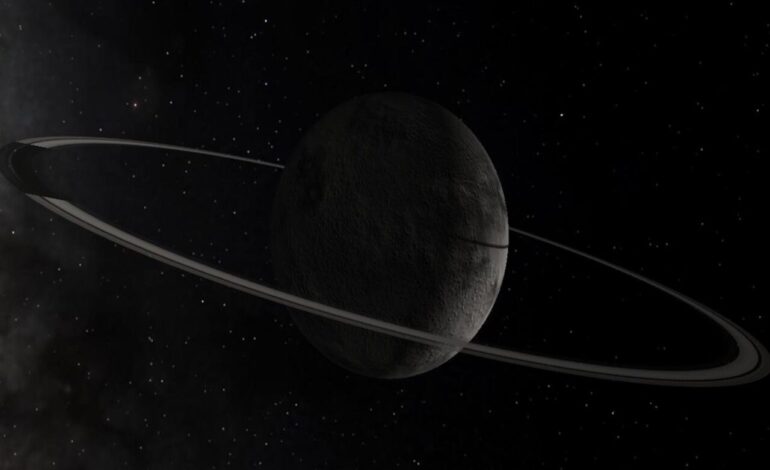Astronomers Witness Potential Ring Formation Around Chiron

A small icy body in the outer solar system, known as Chiron, may be in the process of developing its own ring system. This extraordinary event, unfolding in real time, has provided astronomers with a rare opportunity to observe the evolution of celestial structures. A team of scientists from Brazil detected initial signs of three distinct rings forming around Chiron, progressing from a cloud of debris into a structured system orbiting the small world.
The findings, published in The Astrophysical Journal Letters, mark what might be the first instance of astronomers witnessing the formation of rings around a celestial object. While the gas giants such as Saturn are famous for their intricate ring systems, other planets like Jupiter, Neptune, and Uranus also possess rings. Notably, Chiron joins the ranks of only a few small celestial bodies, including Chariklo, Haumea, and Quaoar, known to have rings.
Discovered in 1977, Chiron was the first object identified in the area between Saturn and Uranus that was neither a planet nor a moon. This discovery led to the classification of a new category of celestial objects called centaurs. For years, the most compelling question surrounding Chiron has been whether it hosts a ring system.
In September 2023, astronomers utilized the Pico dos Dias Observatory in Brazil to observe Chiron as it passed in front of a distant star. During this event, the star’s light dimmed multiple times, suggesting the presence of a ring system or possibly a cometary tail surrounding the centaur. The team, led by postdoctoral researcher Chrystian Luciano Pereira, compared recent observations with data collected in 2011, 2018, and 2022.
Their analysis revealed three well-defined rings situated at distances of approximately 170 miles (273 kilometers), 202 miles (325 kilometers), and 272 miles (438 kilometers) from Chiron, along with a fourth, more distant ring located around 870 miles (1,400 kilometers) away. This fourth ring is particularly intriguing as it exists beyond the Roche limit, the region within which a smaller celestial body would disintegrate and form a ring around a larger body. Beyond this limit, material tends to coalesce to form a moon.
The team has emphasized the need for further observations to confirm the status of the fourth ring, as it is a relatively new discovery. They remain hopeful that subsequent observations of Chiron as it moves in front of other distant stars will provide additional insights into the nature of the material surrounding this fascinating object. Should Chiron indeed be forming a ring system, it would offer scientists a unique opportunity to understand the processes that led to the formation of the majestic rings observed around planets like Saturn.
As astronomers continue to monitor this evolving situation, the study of Chiron may shed light on the broader mechanisms of ring formation in our solar system and beyond.






